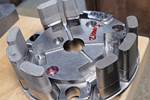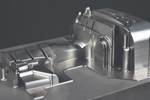Roadmapping Workshop Reveals Key Pain Points and Leverage Areas of Advanced Tooling Manufacturing
Oak Ridge National Laboratory and The University of Toledo, College of Engineering workshop reveals the challenges facing U.S. mold builders and identifies efforts needed to decrease dependence on offshore tooling.
MMT’s foundation is built upon a crusade to get this critical niche of manufacturing recognized. After 23 years, we’ve been told that this brand has helped to legitimize the moldmaking industry. However, MMT is one of many organizations that have also taken on this fight to educate, advocate for and collaborate with this community. They spend resources conducting research to learn more about moldmaking and its challenges with the hope of finding funds to develop solutions that will keep the mold manufacturing industry moving forward.

Two such organizations are Oak Ridge National Laboratory (ORNL) and The University of Toledo, College of Engineering, which conduct road mapping sessions that solicit input from industry leaders on research that will benefit U.S. tooling manufacturers. The session I attended was a one-day workshop with representatives from industry, academia, national labs and government sectors discussing the challenges facing the U.S. mold and die industry to identify the efforts needed to increase the U.S. global market share and decrease the dependence on offshore tooling.
The discussion revealed the following needs:
1. Advancing manufacturing technology for automotive molds and dies
Although additive manufacturing (AM) technology has proven successful in the mold and die industry, we need additional technology development to meet industry standards and reach the comfort level of full adoption. This will require thinking outside of the box, for example, integrating AM and subtractive processes.
2. Material innovation for molds and dies
We need to develop specialized materials and AM feedstocks with diverse properties that withstand thermal and mechanical cyclic loading to enhance mold durability—including advanced materials characterization methods, design/material optimization, residual stress management and predictive software.
3. Smart molds and dies with machine learning (ML) and artificial intelligence (AI)
We need to overcome the reliance on the “black art” of moldmaking by developing and integrating smart automation platforms (e.g., software, process simulation, AI and ML), which will lead to “smart molds” or more optimized mold solutions.
4. Workforce development, education and training
We need a scalable embedded education model that allows K-12, community and technical colleges and universities to use a hands-on approach and industry training focused on design for AM, large-scale metal and polymer AM processes, materials maintenance, non-destructive inspection and qualification, integrated computational engineering and data analytics.
This research is ongoing, so stay tuned for updates. In the meantime, click here to read about some of the specific insights participants shared during each of these four breakout sessions.
Related Content
-
MoldMaking Technology's Most-Viewed Content of 2023
The most popular MoldMaking Technology content according to analytics reports over the past 12 months.
-
Perspectives on Sustainability in Mold Building: A Diverse Outlook
In conversations with individuals involved in the mold building industry, a variety of perspectives on sustainability emerged, showcasing the multifaceted nature of the term.
-
2024 Outlook: Anticipating Trends and Opportunities for Mold Builders
The January 2024 issue lineup sets the tone for the variety of topics, technologies and trends that we will cover this year.










_300x250 3.png;maxWidth=300;quality=90)





